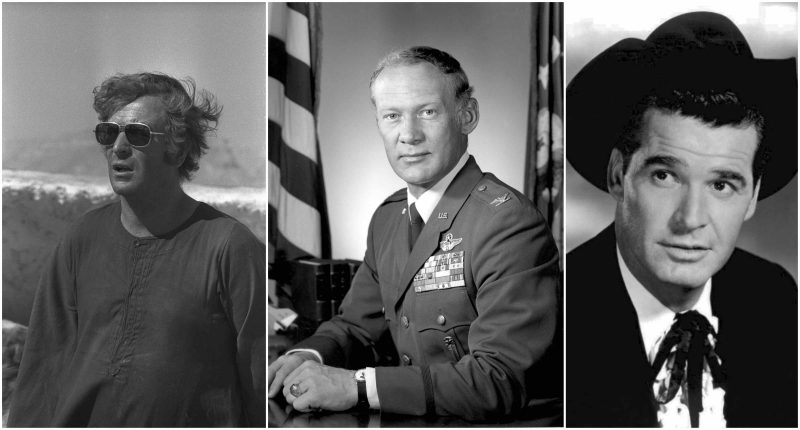With the outbreak of the Korean War, many young men left their home and did what every patriot at that time did; enlisted in the army. Some of those young men would turn out to be iconic actors, country singing legends, and even astronauts.
Check out the list of the 5 iconic celebrities that fought in Korean War:
Sir Michael Caine
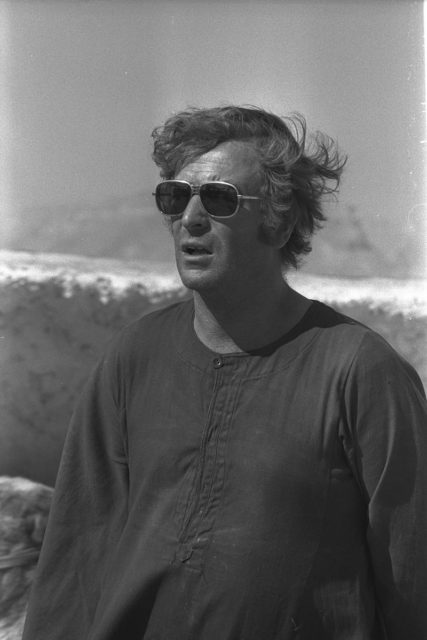
From 28 April 1952, when he was called up to do his national service until 1954, he served in the British Army’s Royal Fusiliers; first at the BAOR HQ in Iserlohn, Germany, and then on active service during the Korean War.
He had gone into Korea feeling sympathetic to communism, coming as he did from a poor family, but the experience left him permanently repelled.
He experienced a situation where he knew he was going to die, the memory of which stayed with him and formed his character; he later said, “The rest of my life I have lived every bloody moment from the moment I wake up until the time I go to sleep.” Caine would like to see the return of national service to help combat youth violence, stating: “I’m just saying, put them in the Army for six months. You’re there to learn how to defend your country. You belong to the country. Then when you come out, you have a sense of belonging rather than a sense of violence”
James Garner
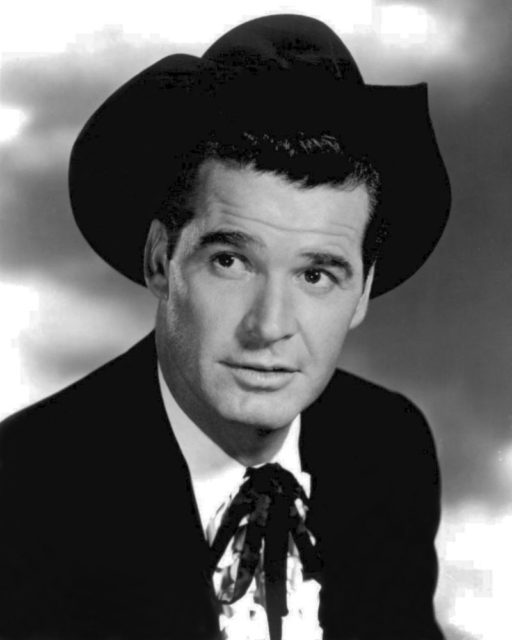
Garner enlisted in the National Guard, serving his first 7 months in California. He then went to Korea for 14 months as a rifleman in the 5th Regimental Combat Team. He was wounded twice, first in the face and hand by shrapnel fire from a mortar round, and the second time in the buttocks from friendly fire from U.S. fighter jets as he dove headfirst into a foxhole.
Garner received the Purple Heart in Korea for the first injury. He qualified for a second Purple Heart (eligibility requirement: “As the result of friendly fire while actively engaging the enemy”), but he did not actually receive it until 1983, 32 years after it had happened. Garner was a self-described “scrounger” for his company in Korea, a role he later played in The Great Escape and The Americanization of Emily.
Johnny Cash

Cash enlisted in the United States Air Force on July 7, 1950. After basic training at Lackland Air Force Base and technical training at Brooks Air Force Base, both in San Antonio, Texas, Cash was assigned to the 12th Radio Squadron Mobile of the U.S. Air Force Security Service. He was stationed at Landsberg, Germany as a Morse Code operator intercepting Soviet Army transmissions during the Korean war. It was there he created his first band, named “The Landsberg Barbarians”. He was also the first radio operator to pick up the news of the death of Joseph Stalin. He was honorably discharged as a staff sergeant on July 3, 1954, and returned to Texas.
Buzz Aldrin
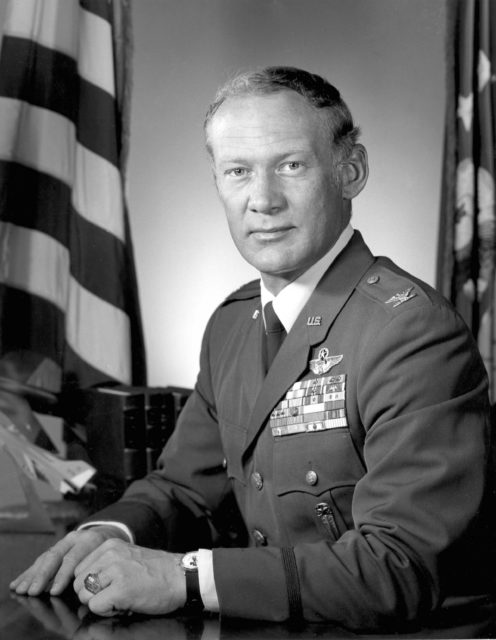
Aldrin graduated third in his class at West Point in 1951, with a Bachelor of Science degree in mechanical engineering. He was commissioned as a Second Lieutenant in the United States Air Force and served as a jet fighter pilot during the Korean War. He flew 66 combat missions in an F-86 Sabre and shot down two Mikoyan-Gurevich MiG-15 aircraft. The June 8, 1953, issue of Life magazine featured gun camera photos taken by Aldrin of one of the Soviet pilots ejecting from his damaged aircraft.
After the war, Aldrin was assigned as an aerial gunnery instructor at Nellis Air Force Base in Nevada, and next was an aide to the dean of faculty at the United States Air Force Academy, which had recently begun operations in 1955. That same year, he graduated from the Squadron Officer School at Maxwell Air Force Base in Alabama. He flew F-100 Super Sabres as a flight commander at Bitburg Air Base, West Germany, in the 22d Fighter Squadron. In 1963 Aldrin earned aDoctor of Science degree in Astronautics from Massachusetts Institute of Technology. His graduate thesis was “Line-of-sight guidance techniques for manned orbital rendezvous”, the dedication of which read, “In the hopes that this work may in some way contribute to their exploration of space, this is dedicated to the crew members of this country’s present and future manned space programs. If only I could join them in their exciting endeavors!”
On completion of his doctorate, he was assigned to the Gemini Target Office of the Air Force Space Systems Division in Los Angeles before his selection as an astronaut. His initial application to join the astronaut corps was rejected on the basis of never having been a test pilot; that prerequisite was lifted when he re-applied and was accepted into the third astronaut class
Neil Armstrong
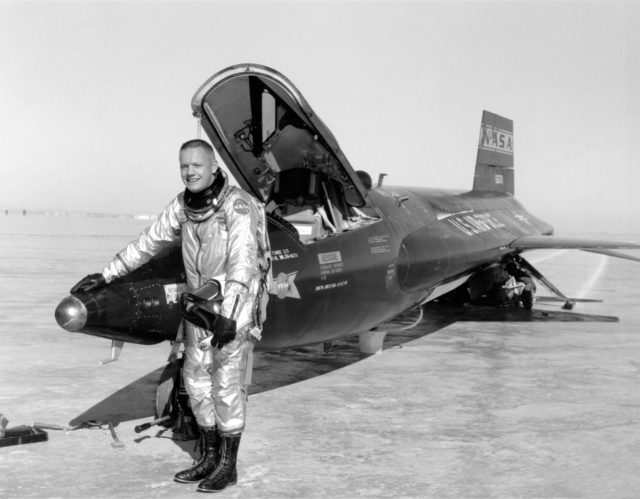
Armstrong’s call-up from the Navy arrived on January 26, 1949, requiring him to report to Naval Air Station Pensacola for flight training at age 18. This lasted almost 18 months, during which he qualified for carrier landing aboard USS Cabot and USS Wright. On August 16, 1950, two weeks after his 20th birthday, Armstrong was informed by letter that he was a fully qualified Naval Aviator.
His first assignment was to Fleet Aircraft Service Squadron 7 at NAS San Diego (now known as NAS North Island). Two months later he was assigned to Fighter Squadron 51 (VF-51), an all-jet squadron, and made his first flight in a jet; an F9F-2B Panther, on January 5, 1951. In June, he made his first jet carrier landing on USS Essex and was promoted the same week from Midshipman to Ensign. By the end of the month, Essex had set sail with Armstrong on board, bound for Korea, where its VF-51’s would act as ground-attack aircraft.
Armstrong flew 78 missions over Korea for a total of 121 hours in the air, most of which were in January 1952. He received the Air Medal for 20 combat missions, a Gold Star for the next 20, and the Korean Service Medal and Engagement Star. Armstrong left the Navy at age 22 on August 23, 1952, and became a lieutenant (junior grade), in the U.S. Naval Reserve. He remained in the reserve for eight years, then resigned his commission on October 21, 1960.
